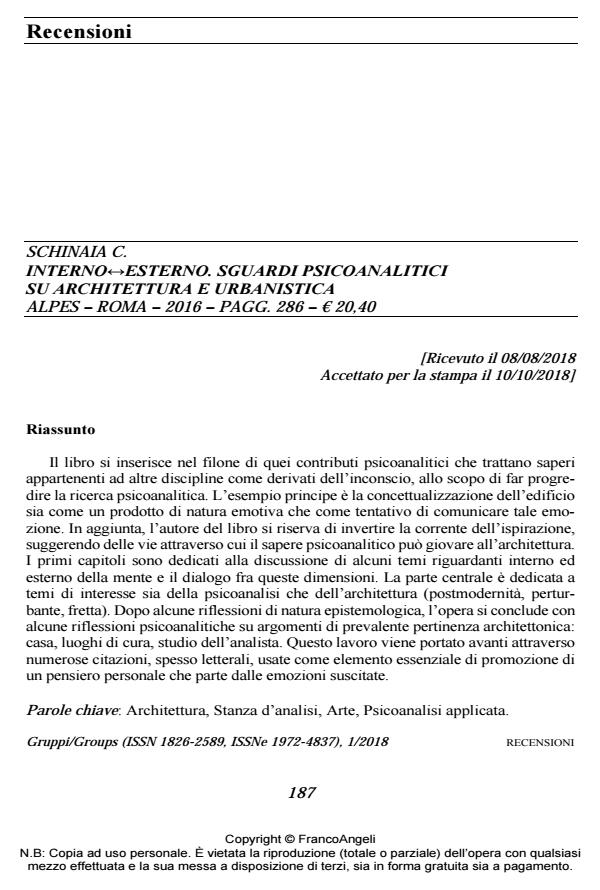Recensioni
Journal title GRUPPI
Author/s A cura della Redazione
Publishing Year 2019 Issue 2018/1
Language Italian Pages 4 P. 187-190 File size 141 KB
DOI 10.3280/GRU2018-001015
DOI is like a bar code for intellectual property: to have more infomation
click here

FrancoAngeli is member of Publishers International Linking Association, Inc (PILA), a not-for-profit association which run the CrossRef service enabling links to and from online scholarly content.
This book belongs to the series of psychoanalytic works that treat knowledge belonging to other disciplines as derivatives of the unconscious. The objective is to use this knowledge as a mean to advance psychoanalytic research. The main ex-ample of this kind of thought process to be found in the book is the conceptualiza-tion of a building as both a product of an emotional nature and the attempt to communicate this emotion. In addition, the author of the book reserves the right to invert the current of the inspiration by suggesting some ways in which psychoana-lytic knowledge can be of benefit to architecture. The first chapters are dedicated to the discussion of some themes about the interior and the exterior of the mind and about the dialogue that exists between these two dimensions. The central part of the book is dedicated to themes that are of interest both of psychoanalysis and of architecture (postmodernity, the uncanny, the sense of hurry). After some epistemological reflections, the work ends with some psychoanalytic thoughts on topics of prevalent architectural relevance: the house, places of care, the analyst’s office. The book’s writing is carried on through several quotes, frequently literal, used as an essential element towards the promotion of a form of personal thought that has its roots in the emotions that it arouses.
Keywords: Architecture, Analyst’s office, Art, Applied psychoanalysis.
A cura della Redazione, Recensioni in "GRUPPI" 1/2018, pp 187-190, DOI: 10.3280/GRU2018-001015